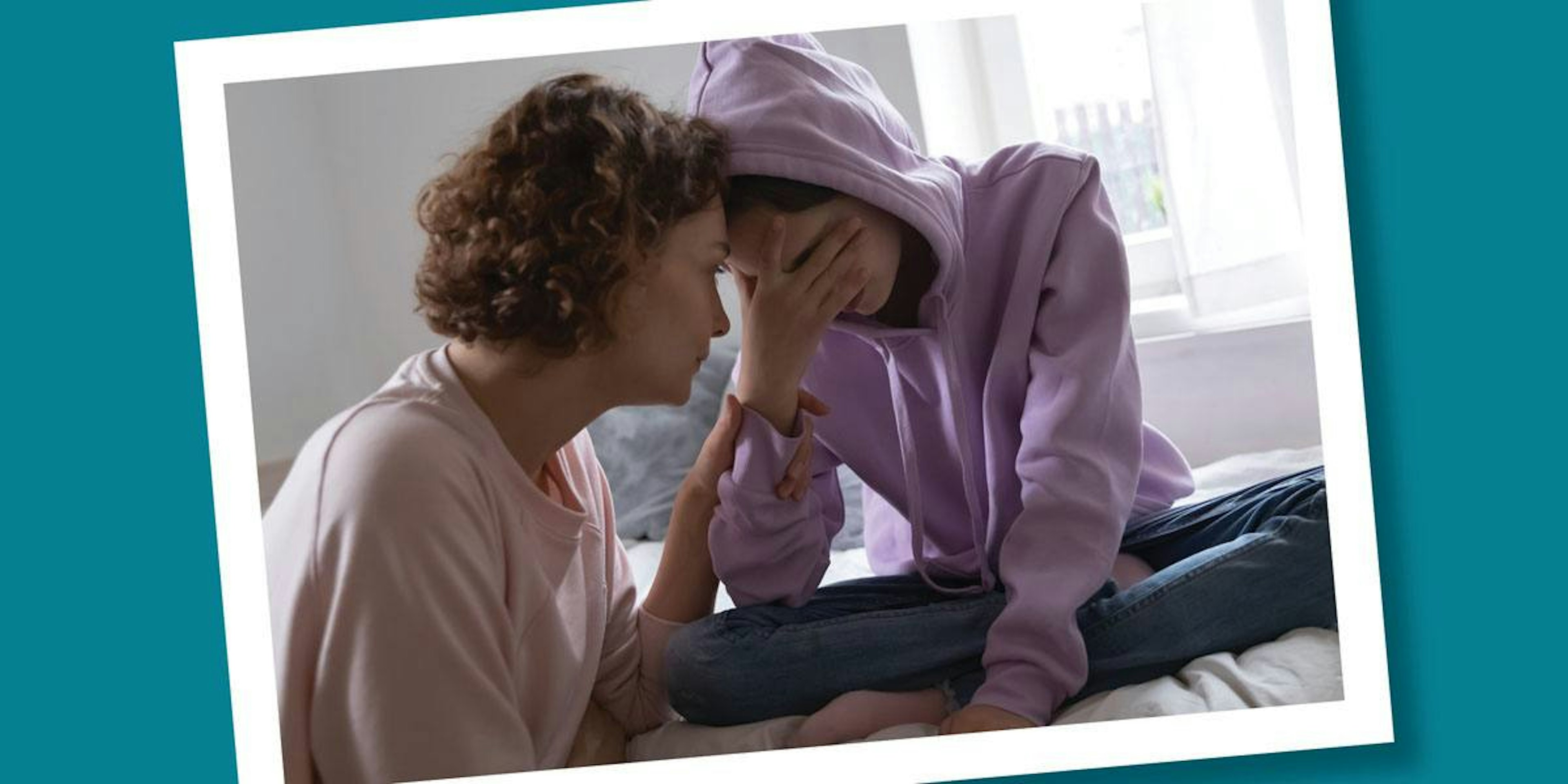Talk 2 Kids About Drugs
The temptations are out there. Teens see drugs and alcohol in school, in peer groups, and in the media. This toolkit has advice and resources to help you identify teens who are using drugs and prevent substance abuse.
Navigate this toolkit.
Here are ways to help you stop the cycle before it starts — and show you what to do if it already has.
Did you know …
- 2/3of students have tried alcohol by 12th grade.
- 1/2of students have tried marijuana by 12th grade.
- 1/5of 12th graders have used medications without a prescription.
Deadly fentanyl is now being found in street drugs.
Synthetic fentanyl is 80 to 100 times stronger than morphine and is being found in cocaine, meth, and opioids.
Part 1:Drugs at a Glance
See what the most used and available drugs are among youth in Delaware. When you know what you’re up against, it’s easier to take action.
Part 2:Drug Fact Sheets
Below, you’ll find a toolkit with info on alcohol and different drugs, how they affect teens, how teens get them, how to talk to teens about using them, and what else you can do to prevent teens from using them.
Keep on hand. Know your stuff. Then talk to them.
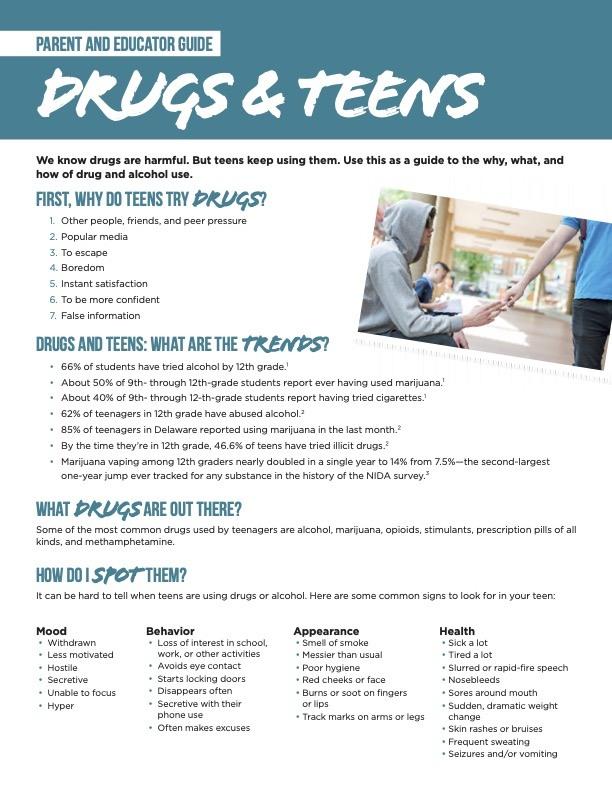
Parent and educator guide: drugs and teens
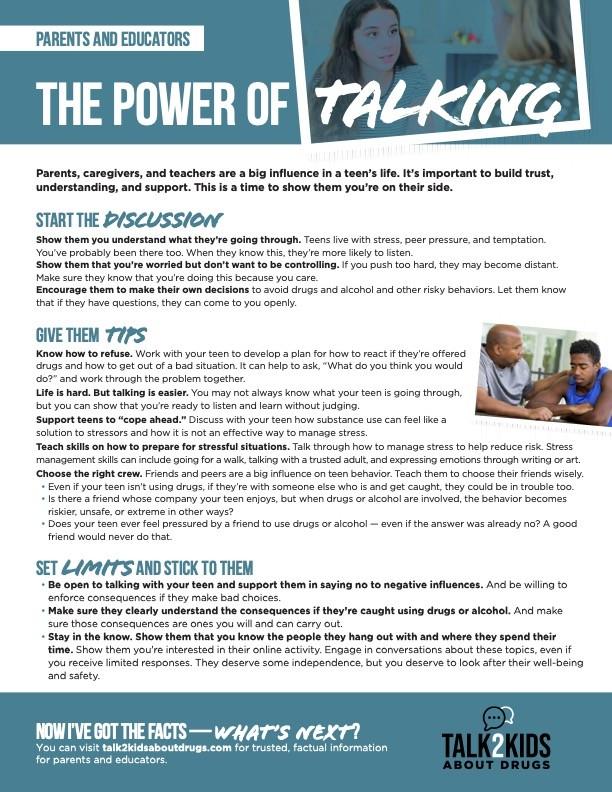
Tips for talking with teens about alcohol and drugs
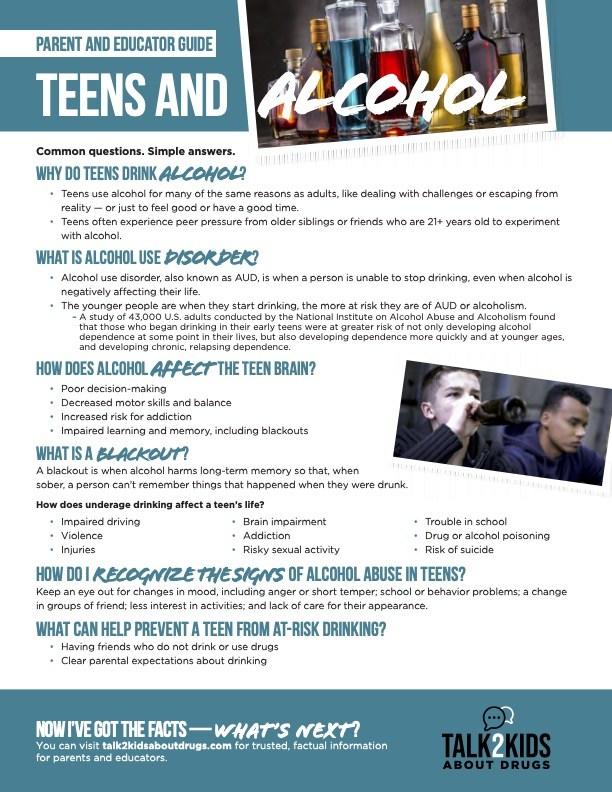
Teens and alcohol
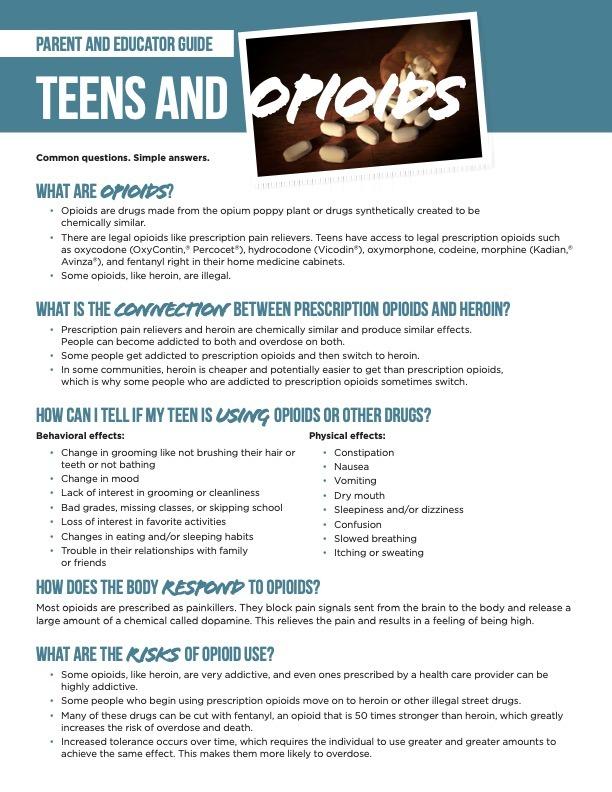
Teens and opioids
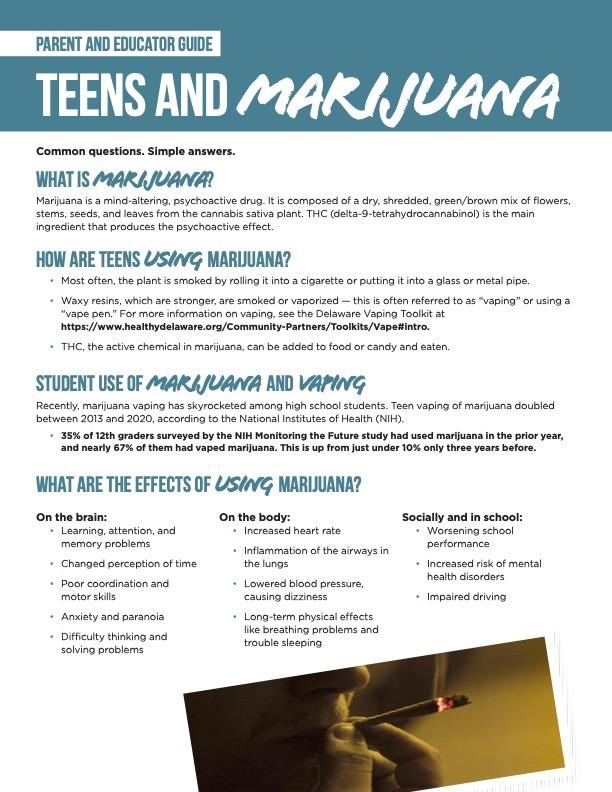
Teens and marijuana
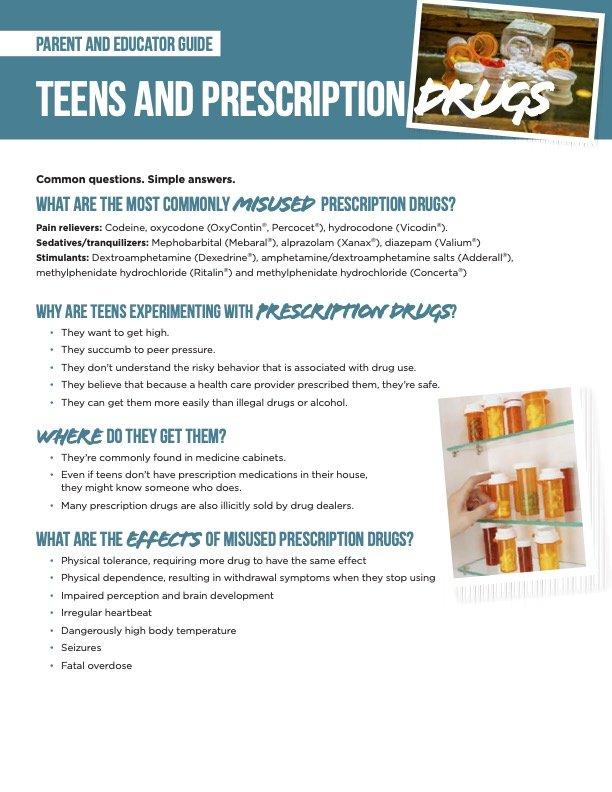
Teens and prescription drugs
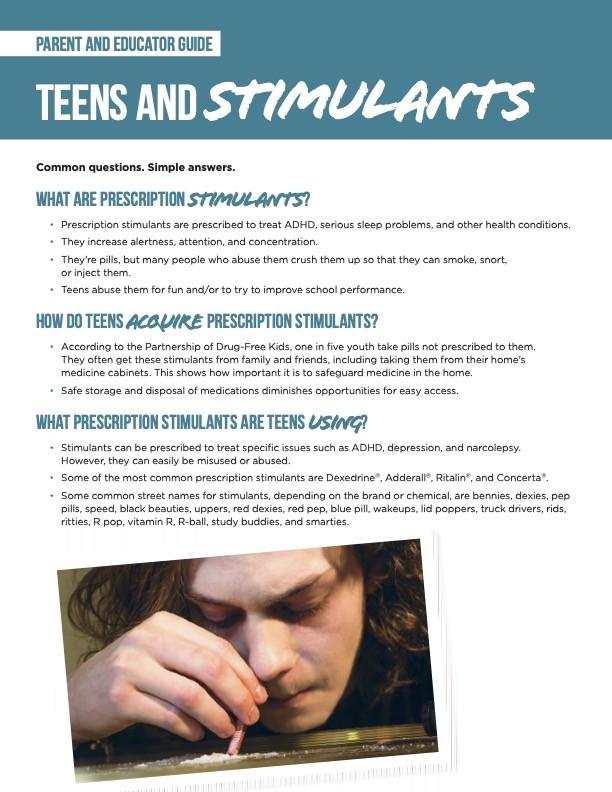
Teens and stimulants
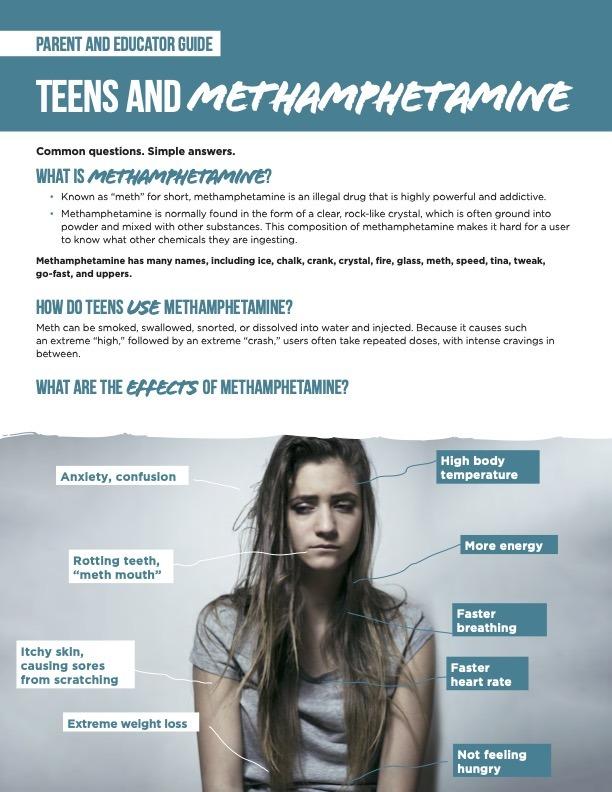
Teens and methamphetamine
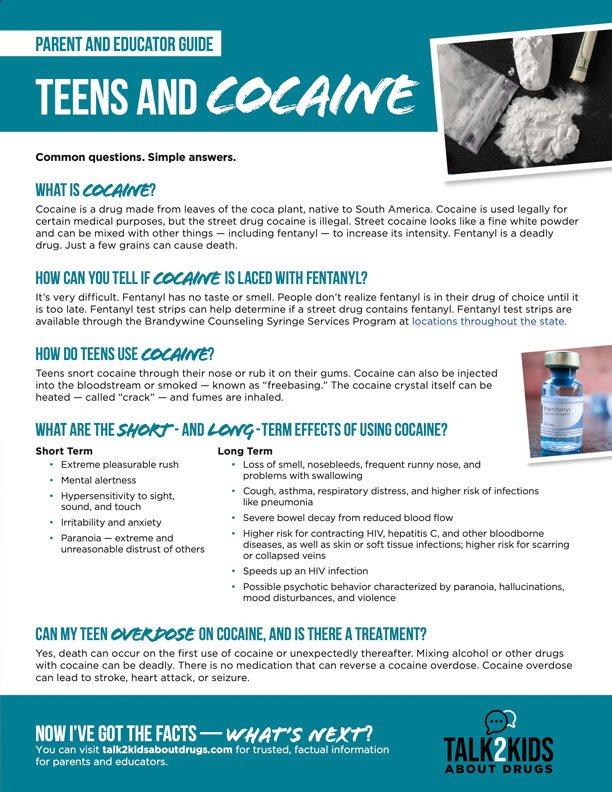
Teens and cocaine
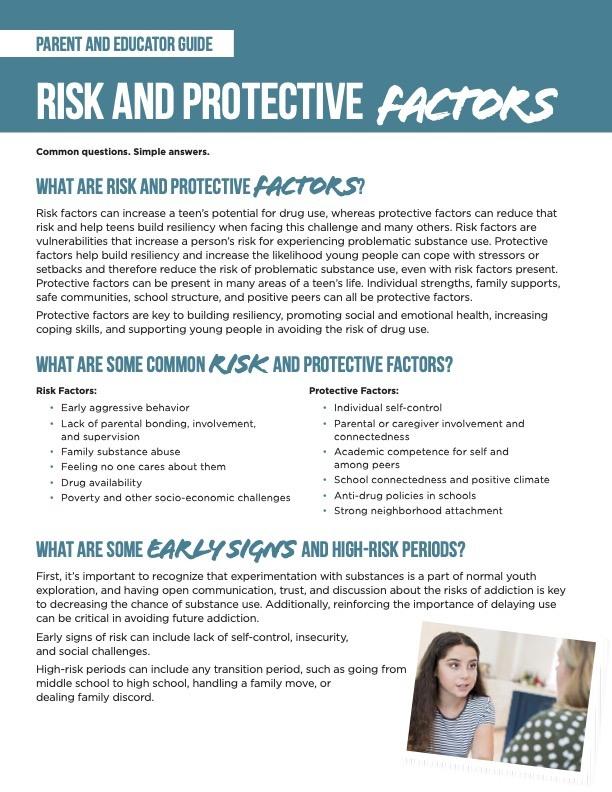
Protective factors
Part 3:Ways for Schools to Spread the Truth
Educator or school administrator? Here, you’ll find social media content, text messages, and announcements about youth substance use that you can send to students, families, parents, and guardians.
Part 4:Educators: Have a Plan
These structured curriculums and other resources provided by various organizations can help you expand your health and prevention efforts.
Botvin LifeSkills Training (LST)
A research-validated substance abuse prevention program proven to reduce the risks of alcohol, tobacco, drug abuse, and violence by targeting the major social and psychological factors that promote the initiation of substance use and other risky behaviors. This comprehensive program provides adolescents and young teens with the confidence and skills necessary to successfully handle challenging situations.
HealthSmart
A comprehensive K-12 health education program designed to meet virtual and classroom needs. Concepts and skills enable students to develop, practice, and support specific healthy behaviors. Schools can teach the comprehensive program or select only the grades and/or subjects they need.
Positive Action
A program based on the intuitive philosophy that we feel good about ourselves when we do positive actions. Every grade level features the same seven units. The scope and sequence enable schools to unify the program message across classrooms and throughout the school. Program training is available and customized for each customer. Training can be completed on-site, with webinars, or both.
Project TND
An effective interactive classroom-based substance abuse prevention program based on more than two decades of successful research at the University of Southern California. Project TND focuses on three factors that predict tobacco, alcohol, and other drug use; violence-related behaviors; and other problem behaviors among youth, including motivation factors, skills, and decision-making.
FreeProject ALERT
Substance abuse curriculum for grades seven and eight created and tested by the RAND Corporation. Developed over a 10-year period, the program addresses the pro-drug mindset of today’s teens and effectively increases their likelihood of remaining drug-free. A digital version of Project ALERT is available online free of charge.
FreeKidsHealth in the Classroom
Free health-related lesson plans for pre-K through 12th-grade educators. Each Teacher’s Guide includes discussion questions, classroom activities and extensions, printable handouts, and quizzes and answer keys all aligned to national health education standards.
Part 5:More Ways to Learn and Help
Here, you will find even more websites and resources to help families, parents, guardians, teachers, and mentors prevent teen drug use.
Get Smart About Drugs — Resources for Educators
Get Smart About Drugs is a website from the DEA (Drug Enforcement Administration) for parents, educators, and caregivers. It contains the latest news, information, tips, and resources for preventing youth drug use. This section contains valuable resources for educators.
Visit siteWhat Educators Can Do to Help Prevent Underage Drinking and Other Drug Use
A printable publication with advice for educators on recognizing the signs of drug use and talking with students about drugs and alcohol. Meant to be complemented by other SAMHSA campaign materials.
DownloadSAMHSA Materials for School
Resources to help school staff members know their role in preventing underage drinking and substance use, including posters than can be displayed throughout the school.
Visit siteTeacher’s Guide: Drugs (Grades 6 to 8)
Activities to help students learn what drugs do to the body and mind, as well as how to deal with the pressure to take drugs.
Visit siteTeacher’s Guide: Drugs (Pre-K to Grade 2)
Activities to help students learn about drug safety.
Visit siteOperation Prevention: Digital Lesson Educator Guide — Learning How Opioids Work
How do addiction and withdrawal affect the body’s many systems? Students examine how drug use alters the mind and body, and reinforces their understanding by creating a peer-to-peer social media campaign.
DownloadOperation Prevention: Sarah’s Sister Activity
In this activity, students will meet Sarah and her younger sister, who has gotten hold of medication that was not properly stored, to understand the importance of storing medication safely.
Download







